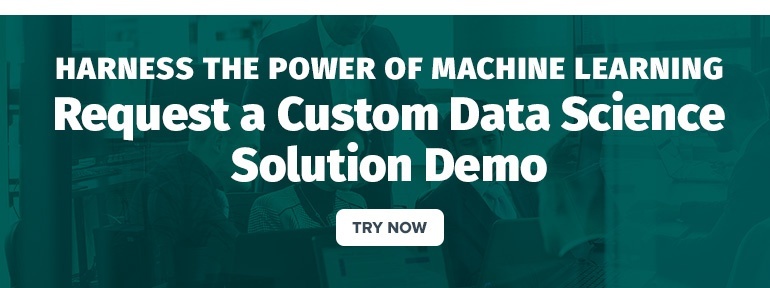The five-step guide to how machine learning will improve the machines you already own
When it comes to maximising the opportunities that Big Data produce, the common consensus is that analytics is key. But data analytics takes many forms. It’s not just a matter of putting it all into a spreadsheet and hoping that your problems disappear. Instead, the type of data analysis you need depends on your business objectives.
The management consultants at Gartner theorise that there are four types of analytics that businesses engage in. We’ve already touched on these in a previous blog but it’s worth expanding upon here.
- Descriptive analytics – where you find out what happened.
- Diagnostic analytics – where you find out the reasons why something happened.
- Predictive analytics – where you predict what will happen.
- Prescriptive analytics – where you find out how you can make something happen.
So how should you apply the analytics from machine learning to optimise the machines you already own?
1. Start with descriptive analytics
Descriptive analytics is where you explore numerical or statistical databases to find the patterns in data. The reports generally provide historical insights into the company’s sales or sales patterns but can also include financial information, inventory statistics and customer trends.
Descriptive analytics can help you spot the patterns in behaviour. Leicester City, for example, provided one of the sporting world’s most romantic stories ever when winning the English Premier League in 2016. While the underdog beating the big boys was a story for the ages – the role of analytics flew under the radar. Leicester City had the lowest rate of injuries in the league for example. Why? Because Leicester’s data scientists analysed the data of when players typically got injured and modified training regimes and substitution models accordingly.
2. Then move to diagnostic analytics
According to Gartner, “diagnostic analytics examines data or content to answer the question “Why did it happen?”, and is characterised by techniques such as drill-down, data discovery, data mining and correlations.
The World Health Organisation used diagnostic analytics to come up with reasons why cases of ‘Multiple and Extensively Drug Resistant Tuberculosis’ (MEDRTB) kept occurring. By examining the data on the existing cases (around 500,000 cases per year) it was able to develop hypotheses to inform treatment options.
As the name suggests, there are few treatment options for MEDRTB but the WHO used the data to find the areas that were most susceptible to outbreaks and then used that data to inform preventative measures.
By using the data to figure out areas that were most likely to suffer from MEDRTB, the WHO was able to reduce incidents of MEDRTB by seven percent in Africa in 2017.
3. Look to the future with predictive analytics
Unlike descriptive and diagnostic analytics, predictive analytics isn’t solely concerned with the past. Instead, it uses elements of both of these types of analytics to make a prediction as to what will happen in the future.
Roland Berger worked with several wind power operators and turbine manufacturers for implementation of predictive maintenance strategies. Wind turbines are often located in remote locations to catch the most wind so maintenance is a huge cost factor for the industry at large.
It has been estimated that maintenance can cost up to 20 percent of the total cost of installation for turbines and windfarms.
Since predictive maintenance supports remote surveillance, it has emerged as an effective method of monitoring wind turbines. Since implementing a predictive maintenance regime, the cost of maintenance has been reduced by 23 percent – and the programme paid for itself within six months.
4. Capture the possibilities with prescriptive analytics
Prescriptive analytics is perhaps the most advanced form of data analytics. It not only predicts what is most likely to happen but makes recommendations based on historical data as to what path the organisation should follow to get the optimal result.
One organisation successfully using prescriptive analytics is the Italian bank, UniCredit. When it comes to risk management, some of the techniques used in banking were quite archaic. Rudimentary credit scores were the basis for most lending decisions but they don’t cover new businesses or customers who have little or no credit story. Instead, Unicredit is turning to prescriptive analytics.
Ivan Cavinato, Head of Credit Risk Methodologies at UniCredit, says that the implementation of prescriptive analytics will democratise the risk management process throughout the bank.
“It basically means that users – whether they are in operations, frontline or back-end support – should be able to analyse the data that is flowing across the system,” he said. “The predictive analytics and decision management software will analyse Big Data to improve customer lending decisions and capital optimisation.”
5. Hire your own data consultant
If the above examples teach us anything, it’s that there is no standard solution for businesses when it comes to interpreting your data. You can’t simply walk into a store and buy a programme that will do everything for you.
Instead, what you want is to talk to an expert who can tailor a bespoke offering for your exact needs. That’s where Statwolf comes in. We’ve helped customers around the globe with their data needs. That might mean implementing a predictive maintenance programme for a manufacturer, creating a fraud detection system for a retailer or designing a machine learning algorithm for enterprise.
We’ve designed custom data solutions that utilise the latest technology across a range of industries.
We don’t just deal in data analytics; we offer data solutions. If you’re interested in a demo of what we can do for you… just click here.



